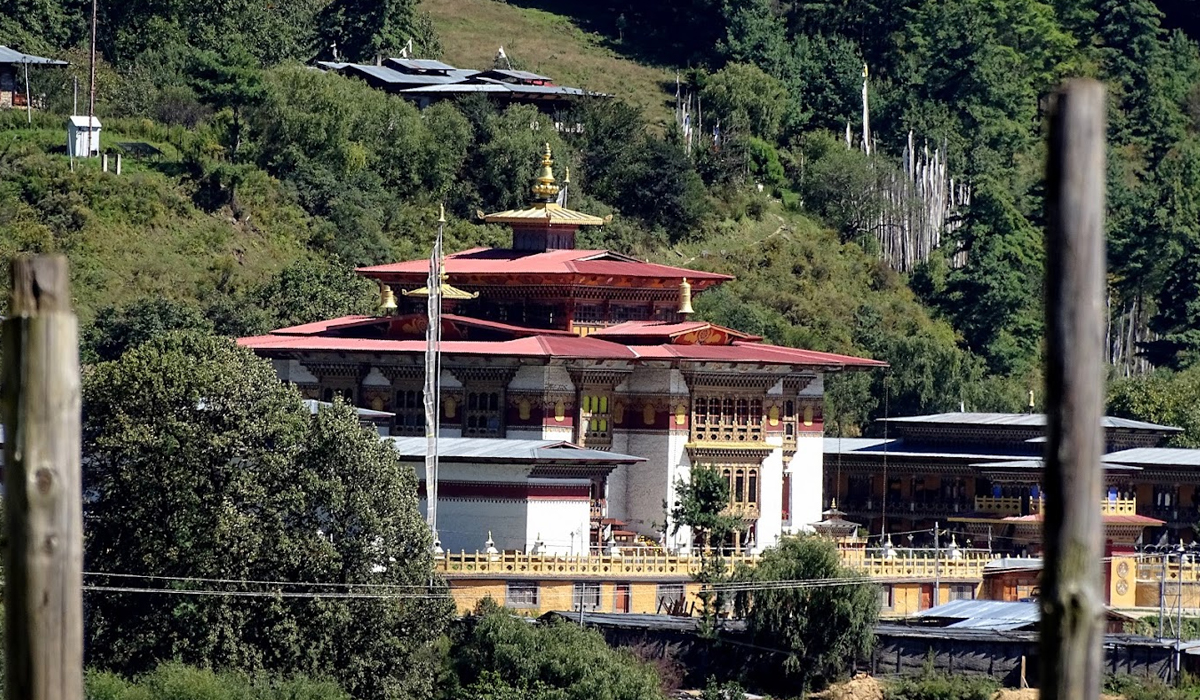


Nimalung Lhakhang: A Gem of Spiritual Devotion in Bumthang
Nimalung Lhakhang, situated in the pristine Chumey Valley of Bumthang, Bhutan, is a serene and sacred temple known for its vibrant festivals, exquisite murals, and deep spiritual significance. Its tranquil setting and cultural richness make it a must-visit destination for pilgrims and travelers exploring Bhutan’s spiritual heritage.
Historical Background
Nimalung Lhakhang was built in the late 17th century by a disciple of the great Tibetan master Longchen Rabjam (Longchenpa), a key figure in the Nyingma school of Buddhism. The temple was established as a spiritual retreat and a center for Buddhist learning, emphasizing the teachings of Guru Rinpoche (Padmasambhava).
Over the centuries, Nimalung Lhakhang has been revered as a place of devotion and meditation, attracting practitioners and pilgrims seeking blessings and spiritual inspiration.
Architectural Features
The temple’s design reflects traditional Bhutanese architecture, with its whitewashed walls, colorful woodwork, and intricately painted exteriors. Inside, the lhakhang houses sacred relics, including statues of Guru Rinpoche and other Buddhist deities.
One of the highlights of Nimalung Lhakhang is its collection of intricate murals, which depict scenes from the life of Guru Rinpoche, the Eight Manifestations of Padmasambhava, and other significant Buddhist stories. These paintings are celebrated for their artistic detail and spiritual depth.
Spiritual Significance
Nimalung Lhakhang is closely associated with the teachings of Guru Rinpoche and the Nyingma school of Buddhism. It serves as a center for religious practice, meditation, and rituals, offering a peaceful environment for introspection and spiritual growth.
The temple’s serene location amidst the rolling hills and forests of Chumey enhances its sacred ambiance, making it an ideal retreat for both monks and lay practitioners.
The Nimalung Tshechu
The Nimalung Tshechu, an annual festival held at the temple, is a major cultural and spiritual event in the region. The festival features sacred mask dances (cham), religious rituals, and traditional songs performed by monks and villagers.
A highlight of the tshechu is the unfurling of a giant thangka (embroidered religious painting) depicting Guru Rinpoche. This event attracts devotees and tourists alike, offering an opportunity to witness Bhutanese culture and spirituality in its most vibrant form.
Access and Experience
Nimalung Lhakhang is located about 15 kilometers from Jakar, the main town in Bumthang. The journey to the temple takes visitors through scenic landscapes, with verdant fields and traditional Bhutanese homes dotting the route.
The peaceful surroundings and the temple’s spiritual atmosphere make it an ideal destination for meditation, prayer, and quiet reflection.
Preservation and Legacy
Efforts have been made to preserve Nimalung Lhakhang and its sacred art, ensuring that it remains a living monument to Bhutan’s rich spiritual heritage. The temple continues to play a vital role in the community, serving as a hub for religious education and practice.
Bumthang - Places to visit

It is famous for its textiles, particularly the locally woven woolen fabrics called “Ura Shing” and “Ura Rachu.”

It has a large prayer wheel, a collection of ancient Buddhist scriptures, and a sacred prayer flagpole.

It is one of the six main Nyingma monasteries in Bhutan and is considered to be one of the most important monasteries.

The monastery has a unique architectural style with intricate wood carvings and paintings that depict life and teachings.

It was established in 2007 by Swiss brewer Fritz Maurer, who had a vision of bringing high-quality beer to Bhutan.

It is known for its ancient frescoes and murals that depict the life and teachings of Buddha, as well as the famous Jataka tales.

The temple houses several important relics, including the sacred chain mall of Terton Pema Lingpa.

It is also known for its collection of ancient Buddhist scriptures and manuscripts, many of which are written on handmade paper and are several centuries old.

Kurjey Lhakhang is a sacred monastery in Bumthang, known for its spiritual significance and beautiful architecture, attracting pilgrims annually.

Jambey Lhakhang, one of Bhutan’s oldest monasteries, is renowned for its historical significance and vibrant annual Tshechu festival.

Mebar Tsho, the “Burning Lake,” is a sacred site in Bumthang, known for its spiritual significance and stunning scenery.
